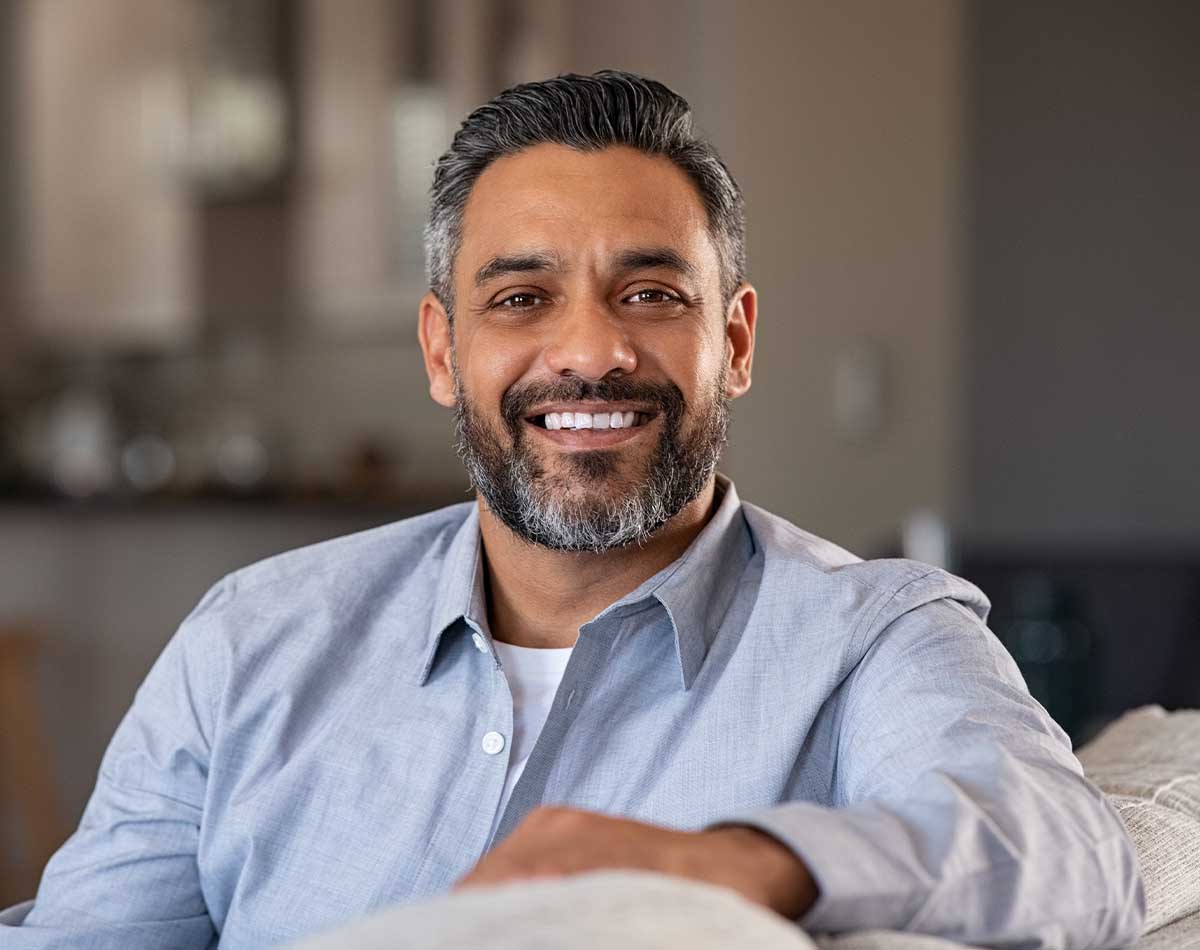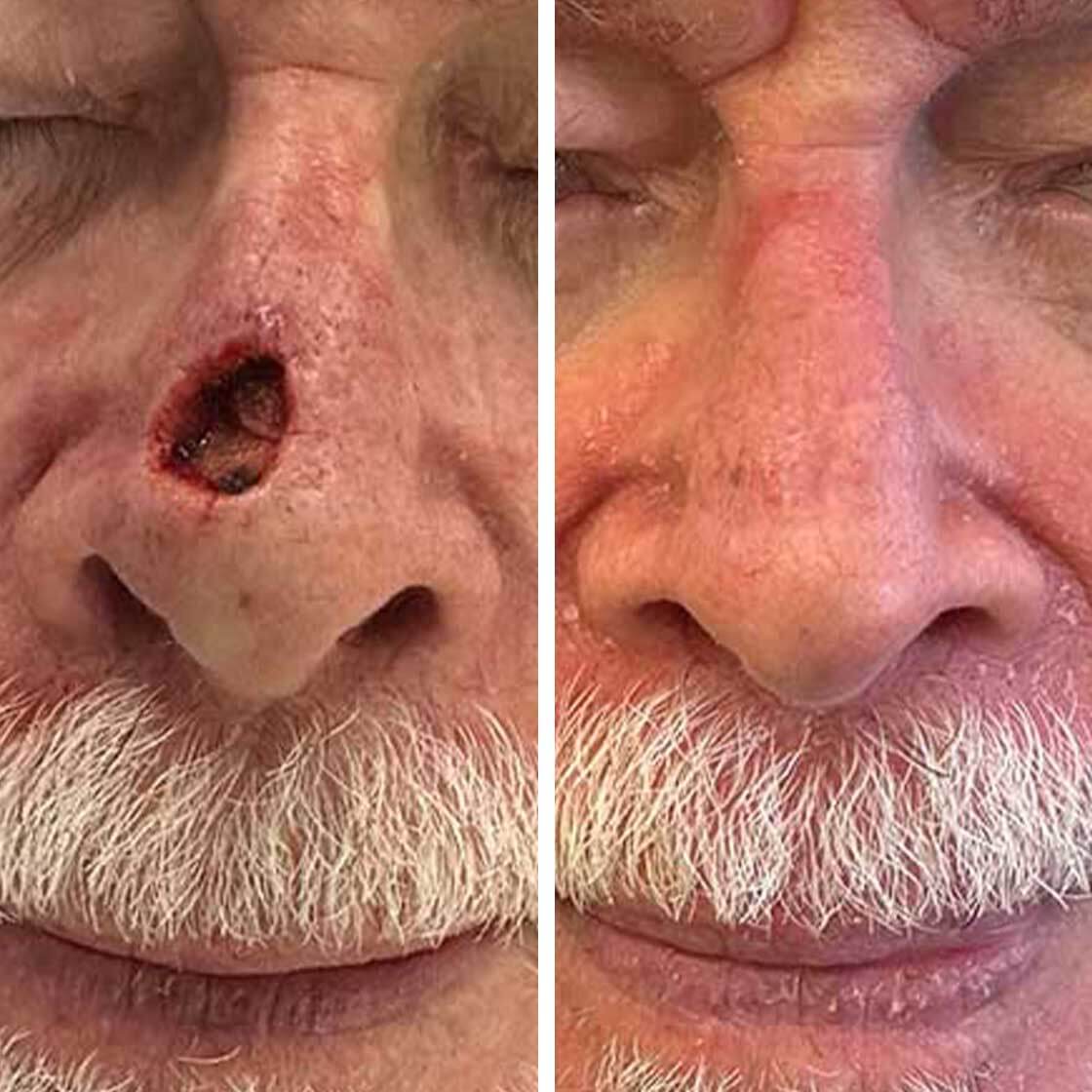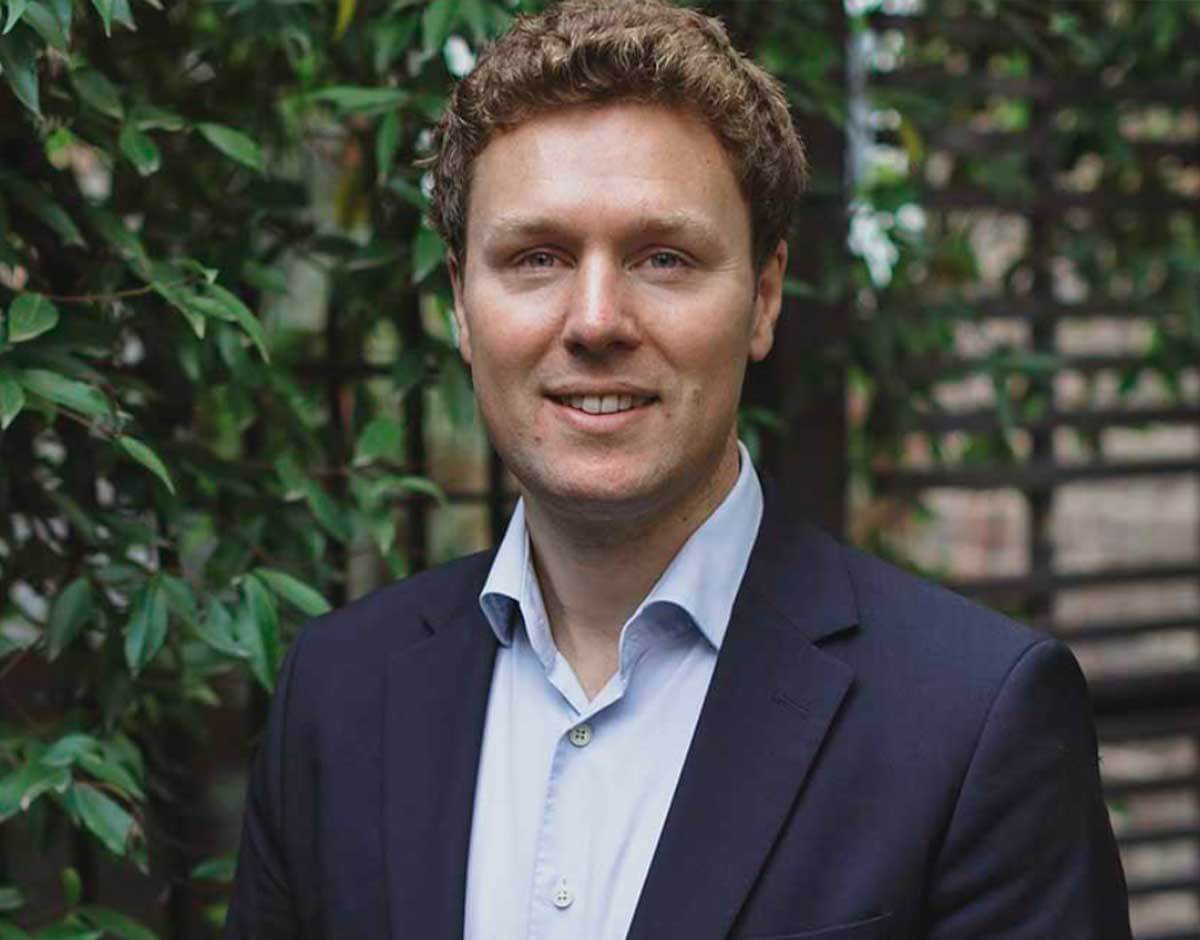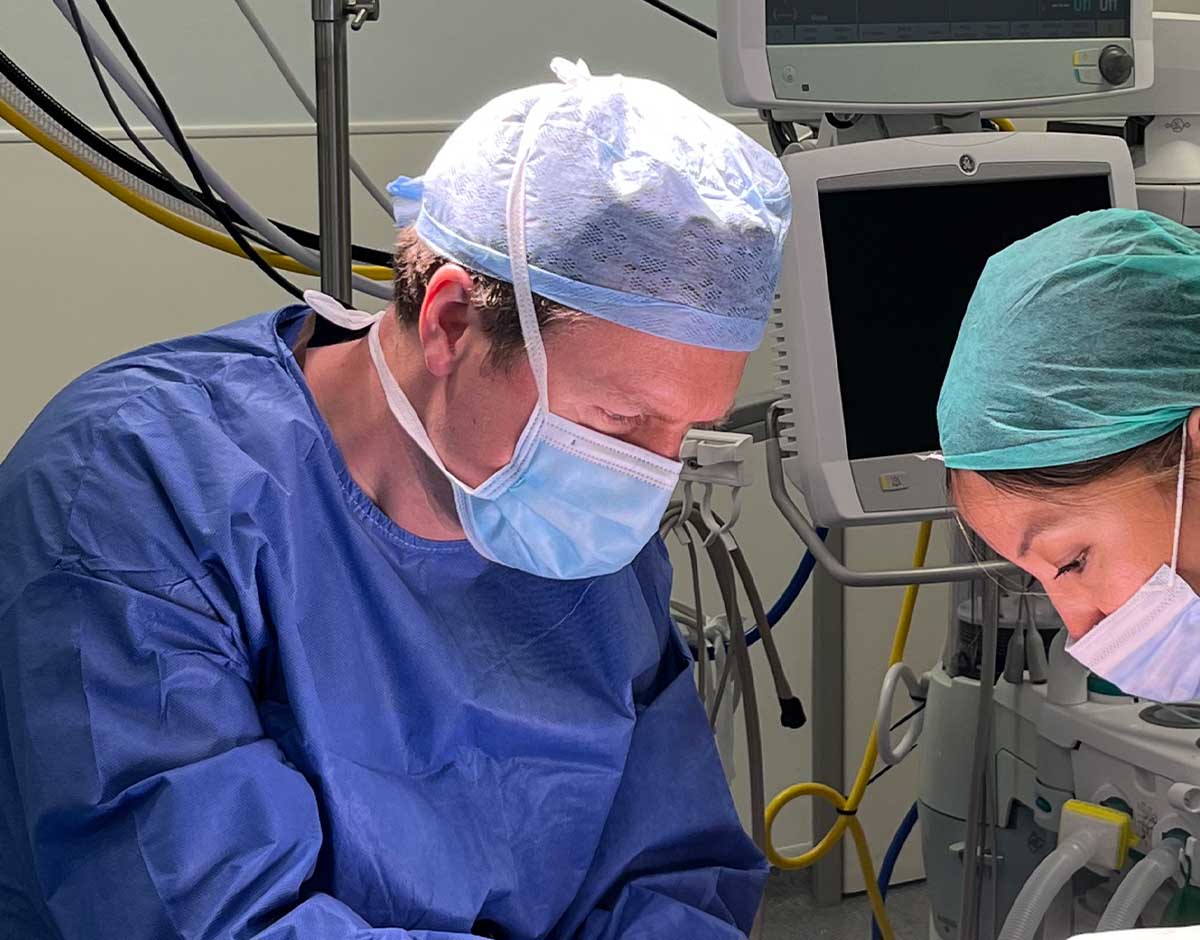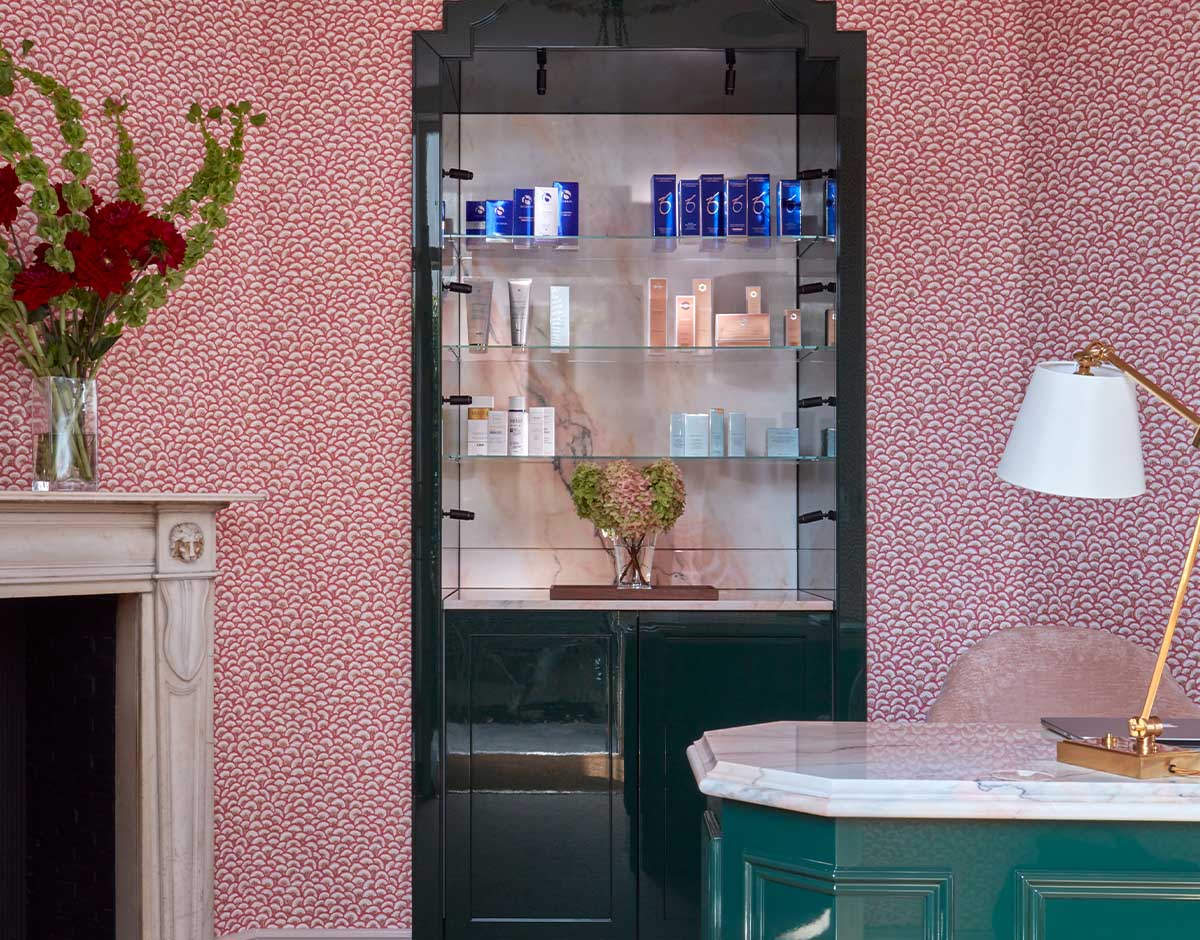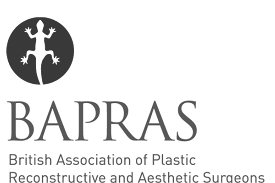-
What is nose reconstruction surgery?
Nose reconstruction surgery is a surgical procedure aimed at restoring the form and function of the nose. This surgery is often necessary for individuals who have experienced trauma to their nose, or more commonly after skin or head & neck cancer removal. During the surgery, the layers of the nose may need to be rebuilt – the skin, framework (cartilage and bone) and the lining (mucosa). Skin flaps or skin grafts may be utilised, in addition to cartilage for framework. Occasionally the lining of the nose is rebuilt by mobilising the nose’s internal lining or by transplanting tissue (radial forearm free flap). The goal is to restore the native colour and contour of the nose, and to optimise breathing.
-
Who is nose reconstruction surgery suitable for?
Patients who have undergone surgery for nasal cancer (skin cancer or head & neck cancer) often require reconstructive procedures, as do those who have suffered traumatic injuries, such as accidents or physical assaults.
-
What will happen at my first appointment with Jonathan?
During your initial visit, Jonathan will conduct a thorough consultation to understand your medical history. He will review your current internal and external nasal anatomy, and consider the potential reconstructive needs after upcoming cancer surgery. Detailed examinations of your nose will be performed, often including photographs and possibly internal examination with a camera, to assess the current structure and plan the surgery. Jonathan will discuss the procedure, potential risks, and expected outcomes with you to ensure you have a clear understanding of what lies ahead. This appointment is also an opportunity for you to ask questions and express any concerns. By the end of the session, you will have a comprehensive understanding of the surgical process and the next steps.
-
How painful is nose reconstruction surgery?
The complexity of the surgery, including whether it’s a minor adjustment or a major reconstruction, may influence the pain experienced. Procedures are most commonly performed under local anaesthetic, and occasionally general anaesthetic, and post-operative discomfort is generally managed with over the counter medications. Patients often report that the initial days following the surgery may produce mild discomfort, and congested breathing may persist for several weeks.
-
How long does a nose reconstruction surgery take?
Nose reconstruction surgery often takes 30 minutes to 3 hours to complete. The exact duration depends on the complexity of the procedure and the extent of the required reconstruction. Jonathan will discuss the length of your individual procedure with you when you have your initial consultation.
-
What results can I expect from nose reconstruction surgery?
The aim of nasal reconstruction is to rebuild the nose to produce the natural contours and replicate the skin colour, in addition to preserving nasal function and breathing. There will be swelling present for several weeks, and that continues to subside with the final results at 1 year.
-
Are there any risks involved with nose reconstruction surgery?
It does carry several risks that potential patients should consider. Bruising and swelling should be expected, and scars are typically red or dark and lumpy for several weeks before becoming flatter and paler over the course of a year. Some patients may experience temporary breathing difficulties post-surgery due to changes in nasal structure. Jonathan will discuss all the risks with you beforehand to ensure you are in a position to make an informed decision about your surgery.

Nose Reconstruction
Face Reconstruction
Nose reconstruction surgery, ranging from closing small wounds to performing total nasal reconstruction, plays a crucial role in restoring both the function and appearance of the nose. This type of surgery is for individuals suffering from traumatic injuries or most commonly reconstruction after cancer removal. Nose reconstruction surgery may require anything from one operation to several, and has a major impact on an individual’s confidence and improvement in quality of life.
What does nose reconstruction surgery involve?
The techniques used during nose reconstruction surgery depends on the severity of the injury or extent of the wound following cancer removal. Simple (skin only) small wounds, particularly in the upper two thirds of the nose, may be stitched closed or occasionally left to heal by themselves.
Larger wounds involving the skin may need mobilisation of adjacent tissue, a local flap, to reconstruct the wound and reproduce the native skin colour and contour. Skin grafts may also be used, and can provide excellent contour albeit the colour match may differ to a degree.
For more extensive wounds which not only involve the skin but also the framework (cartilage or bone) and the lining (mucosa), surgery is complex and may require a number of operations. The skin may be rebuilt over two to three operations with tissue from the forehead (forehead flap) or cheek (nasolabial flap). A bridge of skin is present initially to preserve blood supply, and can later be divided when a new blood supply has been formed. The framework may be rebuilt using cartilage from the rib, septum of the nose, or ear. Cartilage offers robust support, crucial for maintaining a natural shape for the nose, as well as functionality. The lining of the nose can be using skin from a forehead or cheek flap, by mobilising lining (mucosa) within the nose, or alternatively using transplanted tissue from the forearm (radial forearm free flap).
Faqs | Nose Reconstruction
“I would certainly recommend Jonathan – he was so gentle and kind aswell as an amazing doctor. I was seen two days after contacting the when I had my biopsy. Five days after that, I had my procedure. Then several weeks of follow up checkups. The clinic was lovely, great location.”
Client Review


